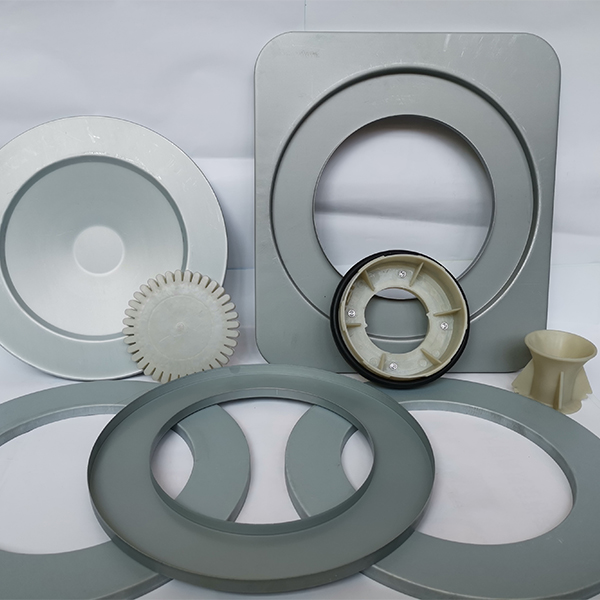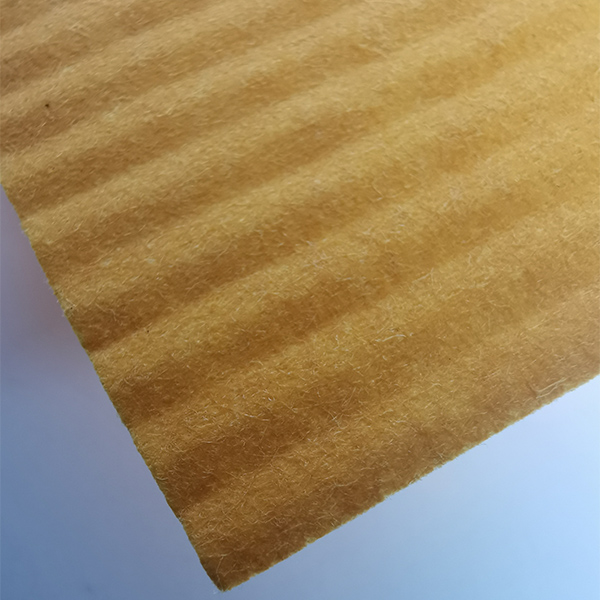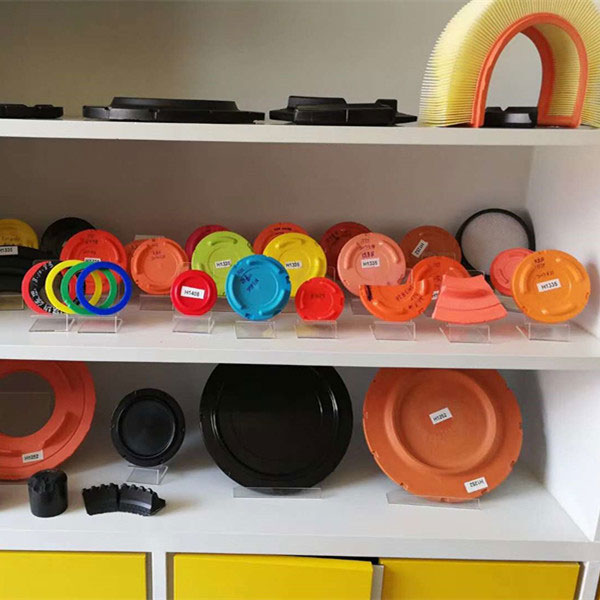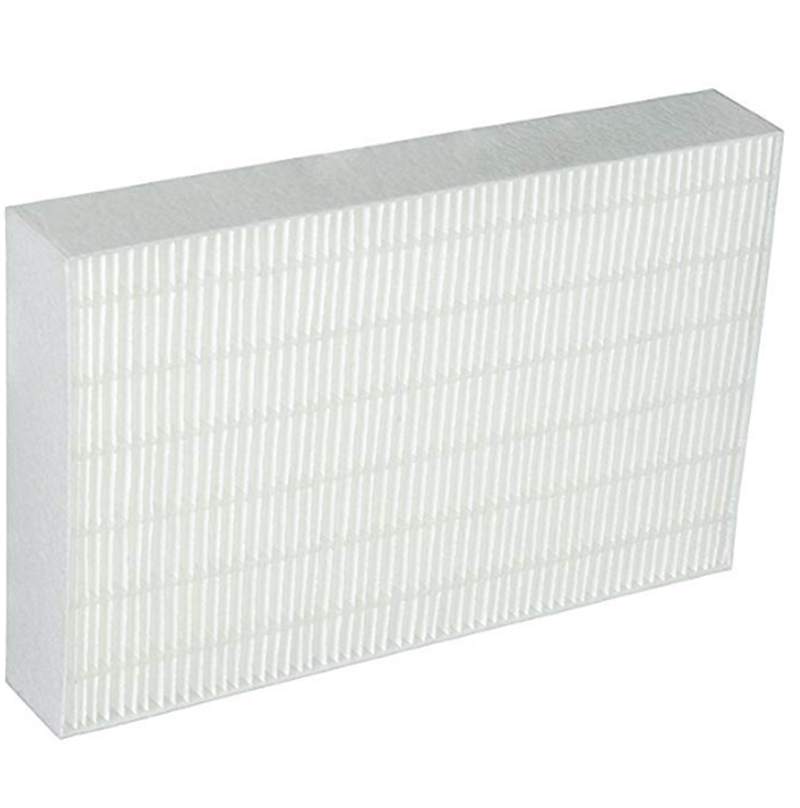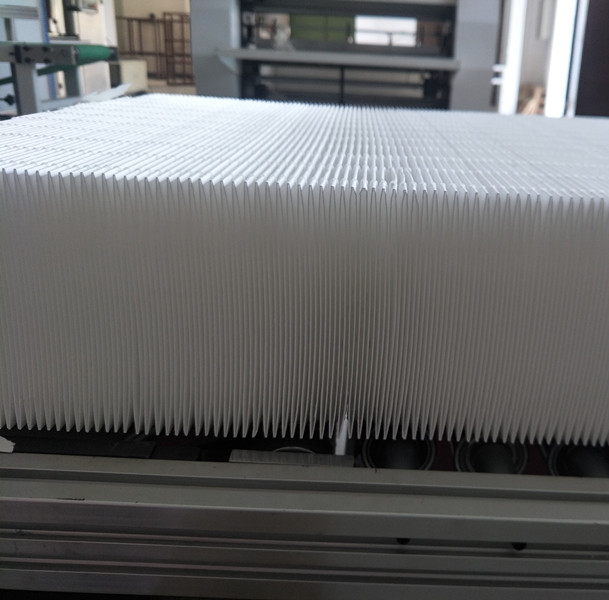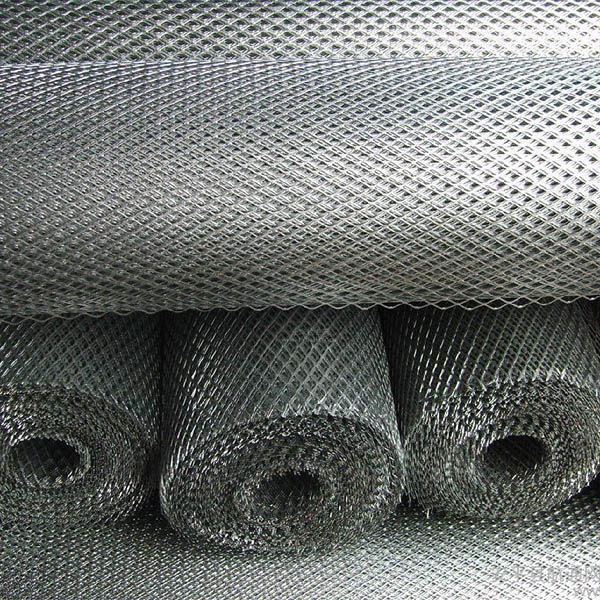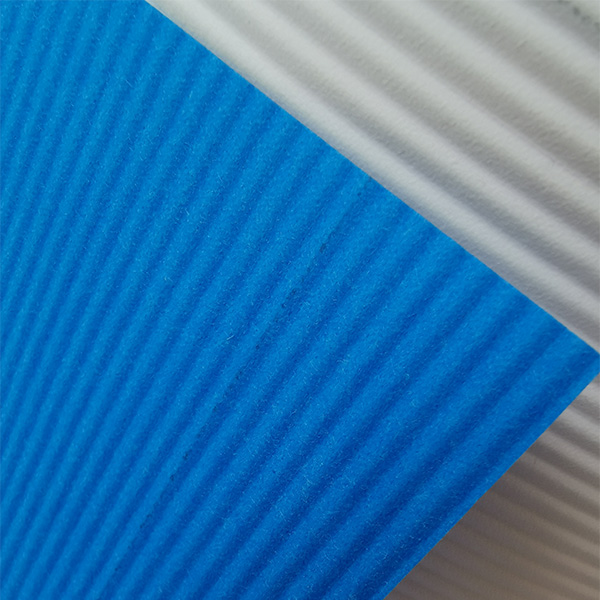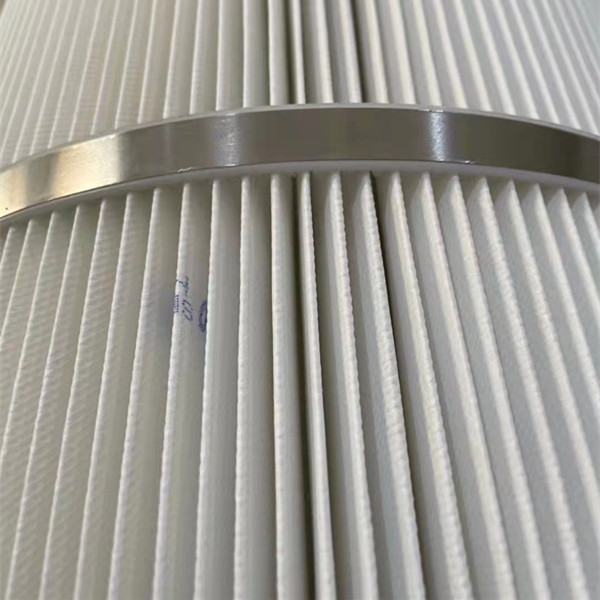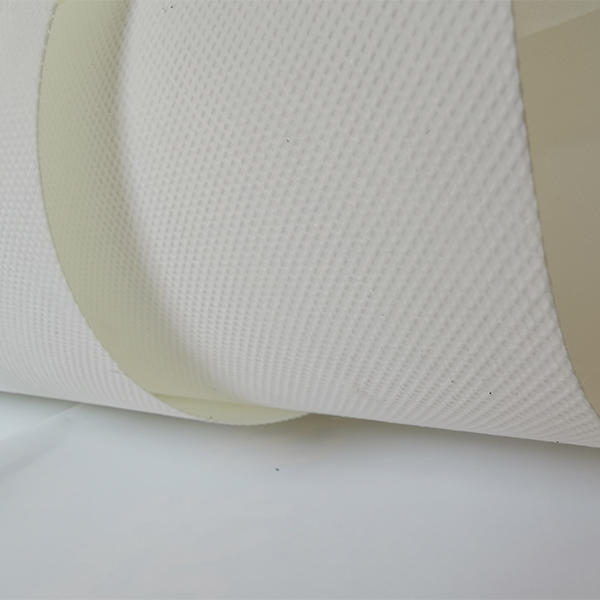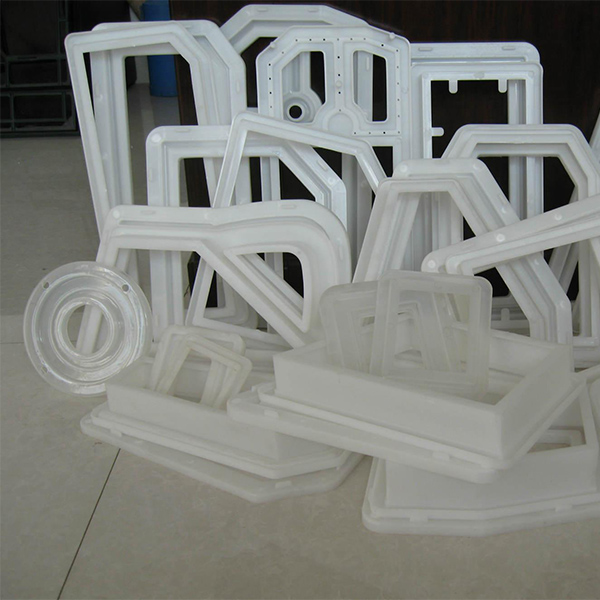Introduction to Industrial Air Filter Cartridges
In the intricate landscape of industrial operations, maintaining pristine air quality is paramount, not only for regulatory compliance and worker safety but also for process efficiency and equipment longevity. At the heart of this critical function lie industrial air filter cartridges. These specialized components are engineered to capture and remove particulate matter, fumes, and other airborne contaminants from industrial environments, playing a vital role in a wide array of applications from heavy manufacturing to sensitive pharmaceutical production.
The demand for high-performance filtration solutions continues to escalate as industries face increasingly stringent environmental regulations and a heightened focus on occupational health. Modern industrial cartridge dust collector filters are designed with advanced media and construction techniques to deliver superior filtration efficiency, extended service life, and reduced operational costs.
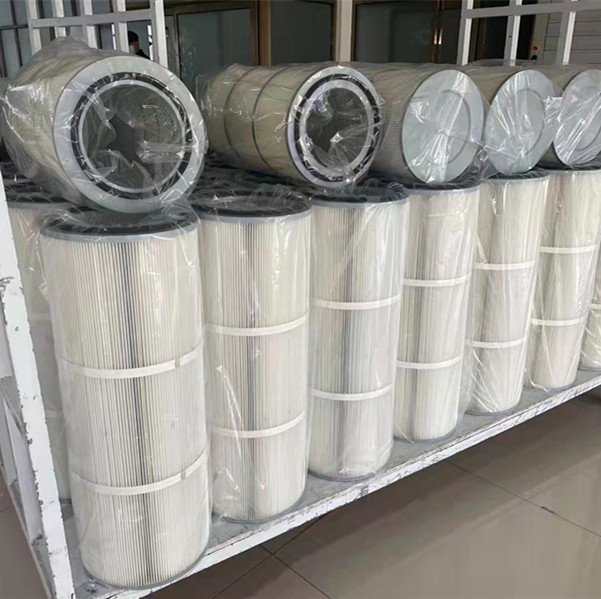
Industry Trends Shaping Industrial Filtration
The industrial filtration market is dynamic, constantly evolving in response to global challenges and technological advancements. Key trends currently shaping the demand and development of industrial dust collector cartridge filters include:
- Stricter Environmental Regulations: Governments worldwide are implementing and enforcing more rigorous air quality standards, such as those from the EPA in North America or the EU's Industrial Emissions Directive. This compels industries to adopt more efficient filtration technologies capable of capturing finer particulates (e.g., PM2.5 and PM10) to minimize emissions and avoid hefty penalties. The focus is increasingly on achieving near-zero emissions.
- Emphasis on Worker Health & Safety: Beyond regulatory compliance, companies are investing in superior air filtration to protect their workforce from respirable dust, fumes, and hazardous airborne contaminants. This proactively reduces instances of occupational lung diseases and improves overall workplace well-being, translating into higher productivity and reduced healthcare costs.
- Technological Advancements in Media: Innovation in filter media is a continuous driver. Nanofiber technology, for example, offers significantly higher surface filtration efficiency and lower pressure drop compared to conventional media, leading to longer filter life and energy savings. PTFE (polytetrafluoroethylene) membrane filters provide exceptional chemical resistance and dust cake release, ideal for sticky or hygroscopic dusts. Advanced coatings, such as oleophobic (oil-repellent) and anti-static treatments, further enhance performance for specific applications.
- Industry 4.0 Integration and Smart Filtration: The adoption of IoT (Internet of Things) enabled sensors for real-time monitoring of filter performance (e.g., pressure drop, temperature, humidity) is gaining traction. This allows for predictive maintenance schedules, optimizing filter replacement cycles, preventing unexpected downtime, and ensuring the dust collector operates at peak efficiency. Integrated diagnostics can alert operators to issues before they become critical.
- Sustainability and Energy Efficiency: There's a growing demand for filters that contribute to sustainability goals. This includes media with lower initial and operating pressure drops, which directly reduce the energy consumption of the fans and blowers in dust collection systems. Longer-lasting filters also contribute to reduced waste generation, aligning with circular economy principles and lowering the environmental footprint of industrial operations.
- Increased Customization: As industrial processes become more specialized, the need for tailored filtration solutions grows. Manufacturers are increasingly offering custom filter dimensions, media compositions, and end-cap designs to perfectly integrate with unique dust collector systems and specific operational challenges.
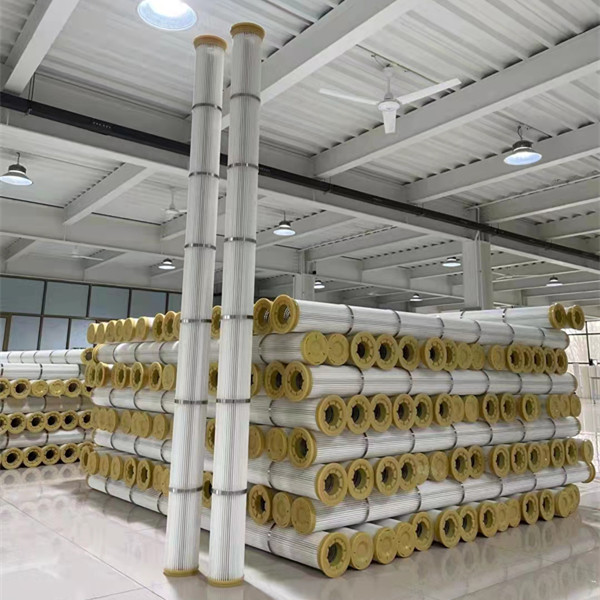
These trends underscore a move towards more intelligent, efficient, and environmentally responsible industrial filtration practices, making the selection of advanced industrial dust collector cartridge filters a strategic decision for forward-thinking businesses.
Detailed Manufacturing Process of Industrial Air Filter Cartridges
The creation of a high-performance industrial air filter cartridge is a multi-stage process, meticulously controlled to ensure optimal filtration capabilities and durability. This intricate process often begins with the selection of premium materials, followed by precision manufacturing and rigorous testing. Adherence to international standards like ISO 9001 for quality management is critical throughout.
Process Flow Overview:
- 1. Media Selection and Preparation:
The choice of filter media is paramount and depends entirely on the specific application requirements, including the type of dust, gas temperature, chemical compatibility, and desired filtration efficiency. Common materials include:
- Cellulose: Economical, effective for dry, non-abrasive dust in ambient conditions.
- Synthetic (Polyester, Polypropylene): Offers good moisture and chemical resistance, suitable for humid or slightly oily dust. Spunbond polyester is a common variant, often enhanced with various coatings.
- Nanofiber Media: Features a thin layer of sub-micron fibers on a base media, providing superior surface filtration, very high efficiency (e.g., ePM1 90% or greater), and lower pressure drop for extended service life.
- PTFE Membrane: A microporous film applied to a base media, offering excellent chemical resistance, non-stick properties for sticky dusts, and very high efficiency, especially beneficial in aggressive or challenging industrial environments.
- Specialized Treatments: Including oleophobic (oil and water repellent), anti-static (for explosive dusts, ATEX compliant), and flame retardant finishes.
The selected media is unwound from large master rolls and prepared for subsequent processes, often involving slitting to precise widths.
- 2. Pleating:
The filter media undergoes a precision pleating process, typically using automated pleating machines. The media is folded into a series of uniform, high-density pleats. The pleat depth, count, and spacing are meticulously controlled to maximize the effective surface area for filtration within the cartridge's physical dimensions. This increased surface area is crucial for enhancing dust holding capacity, extending filter life, and maintaining a low operating pressure drop, which contributes to energy saving.
- 3. Media Stabilization and Support:
To maintain pleat integrity and prevent pleat collapse or shifting during operation and reverse-pulse cleaning cycles, the pleated media is stabilized. This often involves applying hot-melt bead separators or epoxy lines along the pleat tips. A perforated metal support core (inner core), usually made of galvanized steel or stainless steel, is inserted inside the pleated media to provide structural rigidity. An outer metal mesh may also be applied for additional protection against abrasion. The metal components are often fabricated using CNC machining to ensure precise dimensions and fit.
- 4. End Cap Attachment:
Custom-designed end caps are attached to both ends of the pleated media pack. These end caps, typically made from galvanized steel, stainless steel, aluminum, or high-strength urethane, are secured using robust sealants, commonly polyurethane potting compound. This process creates a hermetic seal, preventing any bypass of unfiltered air. Urethane end caps are often formed through a precise casting process, while metal end caps involve stamping or pressing operations.
- 5. Gasket Application (if applicable):
For certain filter designs, especially those requiring a tight seal against the dust collector's plenum, gaskets are integrated into the end caps. Materials such as neoprene, EPDM, or silicone are chosen based on temperature, chemical exposure, and sealing requirements. These gaskets are crucial for preventing air leakage and ensuring the entire system functions effectively.
- 6. Curing:
After assembly and sealing, the entire cartridge undergoes a controlled curing process, typically in an oven. This process ensures that the sealants and potting compounds fully polymerize and harden, achieving their maximum adhesive strength, chemical resistance, and thermal stability. Proper curing is essential for the long-term durability and integrity of the filter cartridge.
- 7. Quality Control and Testing:
Each finished industrial air filter cartridge undergoes stringent multi-point quality control checks. This includes visual inspection for defects, dimensional verification (against ANSI standards), and crucial performance testing such as:
- ISO 16890: The international standard for air filter testing, which classifies filters based on their efficiency against different particulate matter size fractions (ePM1, ePM2.5, ePM10).
- ASHRAE 52.2: A North American standard that measures the performance of general ventilation air cleaning devices, resulting in MERV (Minimum Efficiency Reporting Value) ratings.
- EN 1822: A European standard specifically for HEPA and ULPA filters, determining absolute efficiency and classification.
- Pressure Drop Testing: Measures the resistance to airflow when the filter is clean, a critical indicator of energy efficiency.
- Leak Testing: Verifies the integrity of all seals and the filter media to ensure no bypass of unfiltered air.
- 8. Packaging and Shipping:
Finished cartridges are carefully packaged using protective materials to prevent damage during storage and transit. They are then dispatched to clients globally, adhering to efficient logistics protocols.

This meticulous attention to detail at each stage ensures that the final product offers extended service life, superior performance, and contributes to energy saving and corrosion resistance in typical application scenarios across various heavy and light industries.
Technical Specifications and Performance Parameters
Understanding the technical specifications of filtration solutions is paramount for engineers and procurement professionals to ensure optimal system performance and compliance. These parameters directly influence filtration efficiency, operational costs, and the overall effectiveness of an industrial cartridge dust collector.
Typical Product Specifications for Industrial Air Filter Cartridges:
| Parameter | Description | Typical Value Range |
|---|---|---|
| Filter Media Type | Primary material composition of the filtration layer. | Cellulose, Spunbond Polyester, Nanofiber, PTFE Membrane, Blended Media |
| Filtration Efficiency | Percentage of particulate matter removed at specific particle sizes. | ePM1 50-95%, ePM2.5 60-99%, ePM10 >95% (ISO 16890); MERV 10-16 (ASHRAE 52.2) |
| Filter Surface Area | Total effective area of filter media, crucial for dust loading capacity. | 150 - 500+ sq ft (14 - 46+ m²) depending on cartridge dimensions. |
| Initial Pressure Drop | Resistance to airflow when the filter is clean and new. | 0.5 - 1.5 in. W.G. (125 - 375 Pa) at specified airflow. |
| Maximum Operating Temperature | Highest continuous temperature the filter can withstand without degradation. | Up to 200°F (93°C) for standard polyester; up to 450°F (232°C) for specialty media. |
| End Cap Material | Material of the top and bottom structural caps. | Galvanized Steel, Stainless Steel (304/316), Urethane, Aluminum. |
| Gasket Material | Material used for sealing the cartridge within the dust collector. | Neoprene, EPDM, Silicone, Urethane. |
| Outer/Inner Liner Material | Material for protective support cages. | Galvanized Steel, Stainless Steel, Expanded Metal Mesh. |
| Service Life (Estimated) | Expected operational duration under typical industrial conditions. | 6 months - 2 years (highly dependent on application and maintenance). |
These robust parameters, often validated by independent testing, are essential for ensuring a filter's suitability for a particular process and its contribution to achieving optimal air quality and operational efficiency.
Diverse Application Scenarios
The versatility of industrial dust collector cartridge filters makes them indispensable across a multitude of heavy and light industrial sectors. Their ability to manage diverse particulate loads ensures cleaner air, optimized operational efficiency, and adherence to environmental and safety regulations.
- Metalworking & Fabrication: These applications generate a wide array of particulates, from fine welding fumes and grinding dust to larger plasma cutting particulate and abrasive blasting media. Specialized filters with flame-retardant or anti-static media are crucial here to prevent fire hazards and ensure worker respiratory health.
- Woodworking: Collecting sawdust, wood chips, and fine wood dust from sanding, sawing, and milling operations is vital for maintaining a clean workshop and preventing combustible dust hazards. High-efficiency filters are key for fine particle capture.
- Pharmaceutical & Food Processing: In these sensitive industries, preventing cross-contamination and maintaining sterile environments is critical. Industrial cartridge dust collector filters with FDA-compliant materials, often with ePM1 or HEPA-level efficiency, are used in tablet pressing, blending, and drying processes to protect both product integrity and personnel.
- Mining & Mineral Processing: These environments are characterized by heavy dust loads from crushing, conveying, and screening operations. Filters designed with robust, abrasion-resistant media (e.g., heavy-duty spunbond polyester) and sturdy construction are essential for longevity and reliable performance under extreme conditions.
- Cement & Aggregate: Managing massive volumes of fine, abrasive dust generated during crushing, grinding, and bagging operations poses significant challenges. PTFE membrane filters are highly effective here due to their non-stick surface, which promotes excellent dust cake release and prolonged filter life, even with sticky cement dust.
- Chemical Processing: Filtering fumes, powders, and potentially hazardous particulates requires specific chemical-resistant media (e.g., polypropylene, PTFE) to withstand corrosive gases and ensure safe atmospheric discharge.
- Power Generation: Capturing coal dust, fly ash, and other combustion byproducts is crucial in coal-fired power plants to protect downstream equipment and comply with strict emission regulations. High-temperature resistant filters are often required.
- Surface Finishing (e.g., Powder Coating): These filters are used to recover overspray and prevent contamination in paint booths and powder coating lines. This improves product finish quality, reduces material waste, and ensures a cleaner working environment. Filters with good dust release characteristics are vital for effective powder recovery.
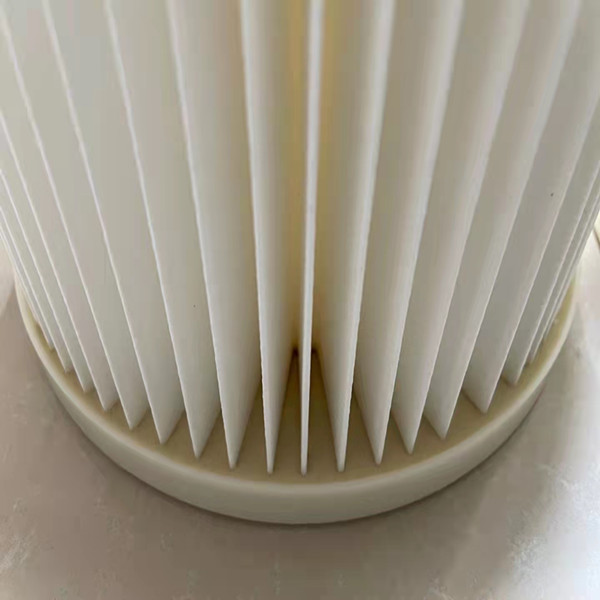
Each of these applications demands specific characteristics from the filter media and construction to ensure optimal performance, extended service life, and adherence to relevant industry standards and safety protocols.
Key Technical Advantages and Performance Benefits
Modern industrial air filter cartridges offer significant technical advantages that translate into substantial operational benefits and a strong return on investment for businesses seeking to optimize their air filtration systems:
- Superior Filtration Efficiency: Utilizing advanced media like nanofibers or PTFE membranes, these cartridges can achieve efficiencies of 99.9% or higher for sub-micron particles (e.g., ePM1 rated filters). This ensures strict compliance with increasingly stringent air quality standards, protects sensitive downstream equipment from fine particulate contamination, and significantly enhances indoor air quality for personnel.
- Extended Service Life: High-quality filter media combined with optimized pleat geometry and depth allows for a significantly greater dust loading capacity. This extends the interval between filter changes, reducing recurring replacement costs, associated labor, and disposal expenses. For instance, nanofiber media can often double or triple the lifespan of conventional spunbond polyester in many applications.
- Significant Energy Savings: Filters engineered with lower initial pressure drop and stable operating pressure drops directly reduce the energy consumption of the dust collector's fan and blower motor. Since fan power consumption is proportional to the cube of the airflow, even a small reduction in differential pressure can lead to substantial energy savings over time, contributing to lower operational costs and a reduced carbon footprint.
- Improved Cleanability (for Pulse-Jet Systems): Specialized media treatments, such as oleophobic coatings, anti-static finishes, or PTFE membranes, enhance the release of the dust cake during reverse-pulse cleaning cycles. This superior cleanability maintains a lower average operating pressure drop, prevents premature filter blinding, and prolongs the effective life of the filter, especially with sticky or challenging dusts.
- Enhanced Chemical and Temperature Resistance: Custom media formulations and construction materials are available to withstand highly corrosive gases, high humidity, and elevated temperatures. This ensures reliability and durability in demanding industrial environments such as chemical processing plants, foundries, or high-temperature finishing lines, where standard filters would quickly degrade.
- Reduced Maintenance and Downtime: The combined benefits of longer service life, superior cleanability, and robust construction lead to less frequent filter changes and reduced overall system maintenance. This directly translates into increased operational uptime, higher productivity, and lower labor costs associated with filter servicing.
- Assured Compliance and Authoritativeness: Filters that are tested and certified to international standards (e.g., ISO 16890, ASHRAE 52.2, EN 1822) provide verifiable performance data. This ensures adherence to environmental regulations (e.g., EPA emissions limits) and occupational safety guidelines (e.g., OSHA permissible exposure limits), bolstering a company's authoritative standing and trustworthiness.
These advantages underscore why selecting the right advanced industrial air filter cartridges is a strategic and financially sound decision for B2B operations seeking to optimize their filtration infrastructure.
Vendor Comparison: A Strategic Perspective
Choosing the right supplier for industrial air filter cartridges is a critical decision that extends beyond mere product specifications. It encompasses the vendor's commitment to quality, technical expertise, customization capabilities, logistics, and after-sales support. A holistic evaluation ensures a partnership that delivers optimal long-term value. Here's a comparative look at key criteria:
Industrial Air Filter Cartridge Vendor Comparison Criteria:
| Criterion | Premium Vendor (e.g., Anya Filter Media) | Mid-Tier Vendor | Economy Vendor |
|---|---|---|---|
| Filtration Efficiency & Media Technology | Leading edge: ePM1 >95% (Nanofiber, PTFE Membrane), advanced coatings (oleophobic, anti-static). | Good: ePM10 >95% (Spunbond Polyester), some specialized coatings. | Basic: ePM10 >80% (Cellulose, standard Polyester). |
| Product Range & Specialization | Extensive: Full range of media types, configurations for diverse industries (ATEX, FDA-compliant options). | Standard sizes with common media options, some basic customization. | Limited to high-volume, standard configurations. |
| Customization Capabilities | Full custom design (dimensions, media, end caps, gaskets), engineering support for unique challenges. | Limited modifications to standard products. | Virtually none; off-the-shelf only. |
| Certifications & Quality Assurance | ISO 9001, ISO 16890, ASHRAE 52.2, EN 1822, independent third-party testing, stringent QC. | ISO 9001, basic adherence to regional standards. | Minimal or no formal certifications. |
| Technical Support & Expertise | Dedicated application engineers, on-site consultations, R&D support, comprehensive documentation. | Standard technical sales support, product datasheets. | Basic product information only. |
| Lead Time & Supply Chain Reliability | Consistent, reliable lead times, global distribution network, strategic inventory. | Standard lead times, regional distribution, potential for minor delays. | Potentially longer or inconsistent lead times, limited distribution. |
| Pricing & Total Cost of Ownership (TCO) | Higher initial cost, but significantly lower TCO due to extended life, energy savings, and less downtime. | Competitive initial cost, moderate TCO. | Lowest initial cost, potentially higher TCO due to frequent changes, higher energy use, and poor performance. |
When evaluating vendors, B2B decision-makers should prioritize the total cost of ownership over initial purchase price. A premium vendor, despite potentially higher upfront costs, typically offers superior products, expert support, and enhanced operational longevity, leading to substantial savings and improved performance over the life cycle of the filtration system. This strategic partnership approach ensures authoritative compliance and trustworthy performance.
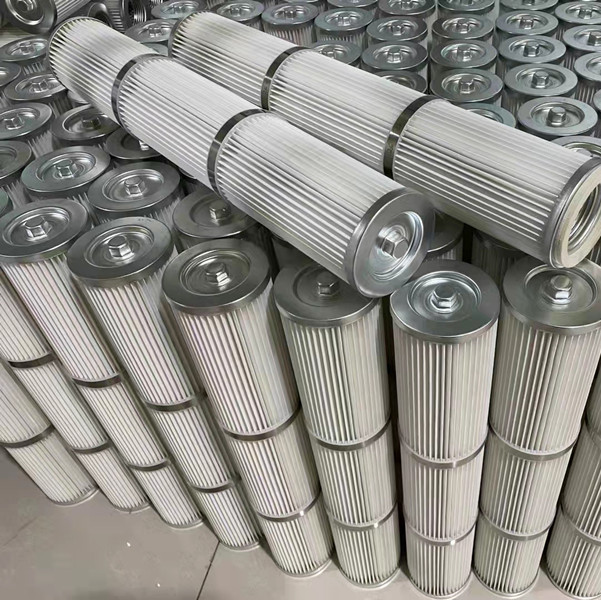
Customized Solutions for Unique Challenges
Not all industrial filtration needs are met by off-the-shelf products. Many complex industrial processes encounter unique challenges that require highly specific industrial air filter cartridges tailored precisely to their operational parameters. Reputable manufacturers excel in providing customized solutions that address these distinct requirements, ensuring optimal performance where standard filters fall short.
- Media Optimization for Specific Dust Characteristics: This involves developing proprietary media blends or applying unique surface treatments to handle unusual dust types—such as extremely sticky, highly abrasive, hygroscopic, or chemically reactive particulates. For example, specific PTFE laminates can be engineered for environments with highly corrosive chemicals, while media with increased tensile strength might be developed for processes generating highly abrasive dust.
- Custom Dimensions and Shapes: Manufacturing cartridges with non-standard lengths, diameters, or unique flange/end cap configurations is crucial for integrating with older, legacy dust collector housings or custom-built systems. This avoids the prohibitive costs and extensive downtime associated with overhauling an entire dust collection system.
- Specialized End Cap and Gasket Configurations: Tailoring end cap materials (e.g., specific grades of stainless steel for food-grade or high-corrosion applications) or gasket types (e.g., high-temperature silicone for thermal resistance, or specific elastomers for chemical compatibility) ensures a perfect, leak-proof fit and long-term sealing integrity in challenging environments.
- Integration of Smart Sensor Technology: For advanced systems, custom filters can incorporate integrated sensors directly into the cartridge design. These sensors provide real-time data on pressure drop, temperature, humidity, or even filter integrity, facilitating predictive maintenance strategies and optimizing change-out schedules for maximum efficiency and minimum waste.
- Compliance with Niche Industry Standards: Beyond general ISO and ASHRAE certifications, some industries demand adherence to highly specific regulations. Manufacturers can engineer filters to meet these niche standards, such as ATEX compliance for hazardous or explosive atmospheres, or stringent FDA/USDA regulations for food and pharmaceutical contact materials.
By collaborating closely with clients, experienced industrial air filter cartridge manufacturers can engineer precise filtration solutions that not only solve current problems but also proactively enhance long-term operational efficiency, safety, and compliance, reflecting a deep level of expertise and responsiveness.
Application Case Studies: Real-World Impact
Demonstrating the tangible benefits of high-quality industrial air filter cartridges through real-world examples helps illustrate their value proposition, showcasing improved performance, cost savings, and enhanced compliance for our clients.
Case Study 1: Cement Production Facility Optimizes Dust Collection
Client: Major cement production plant in the Midwestern United States.
Challenge: The plant operated a large clinker cooler dust collector, utilizing conventional spunbond polyester filters. They experienced frequent clogging, premature filter failure (every 6 months), and high differential pressure, leading to excessive downtime for filter changes, significant maintenance costs, and difficulty consistently meeting local particulate emission limits (often exceeding 10 mg/Nm³).
Solution: Anya Filter Media collaborated with the plant engineers to understand the specific characteristics of the clinker dust (fine, abrasive, and slightly sticky). We recommended and supplied industrial dust collector cartridge filters featuring a robust spunbond polyester media augmented with a high-release PTFE membrane coating. This specialized media offered superior dust cake release and enhanced resistance to abrasion and moisture.
Results:
- Emissions Reduction: Particulate emissions were reduced by over 80%, consistently staying below 2 mg/Nm³, ensuring full regulatory compliance and improved community relations.
- Extended Filter Life: Filter service life dramatically increased from 6 months to 18 months, leading to a 66% reduction in replacement frequency and disposal costs.
- Reduced Pressure Drop & Energy Savings: The average operating pressure drop across the filter bank decreased by 25%. This reduction in airflow resistance translated into an estimated 15% energy saving for the fan motor, resulting in annual energy cost savings of approximately $30,000.
- Reduced Maintenance & Downtime: Less frequent filter changes and more effective pulse-jet cleaning cycles significantly reduced labor costs for maintenance and increased the overall operational uptime of the clinker cooler.
Case Study 2: Pharmaceutical Facility Achieves Enhanced Air Cleanliness
Client: Leading pharmaceutical manufacturing company producing sterile injectable drugs.
Challenge: The client required ultra-clean air for their aseptic filling and lyophilization (freeze-drying) rooms to prevent product contamination and ensure robust worker safety from potent active pharmaceutical ingredients (APIs). Their existing primary filtration system struggled to consistently meet ISO Class 8 air cleanliness standards within these critical zones, leading to concerns about compliance and product quality.
Solution: Anya Filter Media supplied high-efficiency industrial air filter cartridges with advanced nanofiber media (rated ePM1 >95%, equivalent to MERV 16) and constructed with FDA-compliant materials. These cartridges were installed as pre-filters in their central HVAC and dust collection units, followed by terminal HEPA filters in the critical aseptic zones. The nanofiber media was chosen for its superior sub-micron particulate capture and lower pressure drop.
Results:
- Improved Air Quality & Compliance: The air quality in critical zones consistently met ISO Class 7 standards, exceeding the initial target of Class 8. This significantly reduced the risk of product contamination and ensured full compliance with stringent pharmaceutical manufacturing regulations (e.g., cGMP).
- Enhanced Worker Safety: Exposure levels to airborne APIs for personnel were reduced by over 90%, as rigorously confirmed by industrial hygiene monitoring, leading to a demonstrably safer work environment.
- Reduced Product Loss: Minimized cross-contamination risks and particulate intrusion led to a significant reduction in batch rejections, improving overall product yield and profitability.
- Longer Lifespan & Cost-Effectiveness: Despite the extremely high efficiency, the nanofiber media maintained a very low differential pressure, extending the lifespan of the pre-filters by 50% compared to previous high-efficiency filters. This reduced procurement and disposal costs while optimizing performance.
Frequently Asked Questions (FAQ)
- Q: How do I determine the right filter media for my industrial air filter cartridge application?
- A: Selecting the correct media depends on a comprehensive analysis of several critical factors: the physical and chemical properties of the dust (size distribution, abrasiveness, stickiness, hygroscopicity), the air temperature and humidity, presence of any corrosive gases, and the required filtration efficiency for both process and environmental compliance. We strongly recommend consulting with our technical experts who can perform a detailed application assessment to recommend the most suitable and cost-effective media.
- Q: What is the typical service life of an industrial dust collector cartridge filter?
- A: Service life varies significantly based on numerous factors including the specific application, dust loading concentration, type of filter media, effectiveness of the pulse-jet cleaning system, and operational hours. Generally, industrial cartridges can last from 6 months to 2 years. Proper media selection, optimized cleaning cycles, and continuous monitoring of differential pressure are key to maximizing filter lifespan and reducing total cost of ownership.
- Q: Can industrial air filter cartridges be cleaned and reused manually?
- A: While pulse-jet cleaning systems are an integral part of modern dust collectors, designed to dislodge dust from the filter surface during operation, attempting to "clean" filters beyond this (e.g., by washing with water, beating, or using compressed air externally) is generally not recommended. Such methods can damage the delicate media structure, compromise filtration efficiency, and potentially create micro-tears that lead to bypass. Replacement is the standard and safest practice when a filter reaches its terminal pressure drop or recommended service life.
- Q: What certifications should I look for when purchasing industrial cartridge dust collector filters?
- A: When sourcing filters, look for products tested and certified to relevant international standards such as ISO 16890 (for general ventilation filters, categorizing by ePM1, ePM2.5, ePM10 efficiency), ASHRAE 52.2 (for MERV ratings in North America), or EN 1822 (for HEPA/ULPA filters). Manufacturer certifications like ISO 9001 demonstrate robust quality management systems. For specialized applications, ensure compliance with standards like ATEX for explosive atmospheres or FDA/USDA for food and pharmaceutical contact materials, as applicable.
Lead Time, Warranty, and Customer Support
Trust and reliability are the cornerstones of successful B2B partnerships. We are committed to transparency in our logistics, comprehensive warranty provisions, and responsive after-sales support to ensure your complete satisfaction and continued operational efficiency.
Lead Time & Fulfillment
For our standard range of industrial air filter cartridges, typical lead times range from 2 to 4 weeks, depending on order volume and current stock availability. We maintain strategic inventory levels for commonly used filter types and sizes to facilitate rapid dispatch and reduce potential downtime for our clients. Custom-designed filters, due to their specialized engineering and manufacturing processes, may require a lead time of 6 to 8 weeks, which includes design, prototyping, and production phases. Our efficient global logistics network ensures reliable and timely delivery to your operational sites, minimizing disruption to your production schedules.
Warranty Commitments
All our industrial dust collector cartridge filters come with a standard 12-month limited warranty against manufacturing defects, effective from the date of purchase. This warranty covers defects in materials and workmanship under normal operating conditions and proper installation as per manufacturer guidelines. Specific media types, advanced constructions, or highly specialized filtration solutions may carry extended warranty periods, with full details provided in individual product specifications and sales agreements. Our commitment is to ensure the highest quality and reliable performance of our products, giving you peace of mind.
Customer Support & After-Sales Service
Our dedicated and highly experienced technical support team is readily available to assist you at every stage, from initial product selection and system design consultation to installation guidance, operational troubleshooting, and performance optimization. We offer comprehensive after-sales support that includes remote and, where necessary, on-site consultations, periodic performance audits of your filtration systems, and tailored training programs for your maintenance personnel. Our overarching goal is to ensure your filtration systems operate at peak efficiency throughout their lifespan, reflecting our unwavering commitment to long-term client success and satisfaction.
Conclusion
The strategic implementation of high-quality industrial air filter cartridges is more than just a regulatory necessity; it is a fundamental pillar of operational excellence and responsible industrial practice. From safeguarding employee health and ensuring stringent environmental compliance to enhancing production efficiency, reducing energy consumption, and extending equipment life, the profound impact of superior filtration cannot be overstated. By thoroughly understanding the manufacturing nuances, detailed technical specifications, application-specific advantages, and comprehensive support services, B2B decision-makers can make informed choices that yield significant long-term benefits, a robust return on investment, and foster a safer, more sustainable operational environment. Partnering with a knowledgeable, experienced, and trustworthy vendor is key to unlocking the full potential of advanced industrial filtration solutions tailored to your unique needs.
References
- ISO 16890:2016. Air filters for general ventilation – Part 1: Technical specifications, requirements and classification system based on particulate matter efficiency (ePM). International Organization for Standardization.
- ASHRAE Standard 52.2-2017. Method of Testing General Ventilation Air-Cleaning Devices for Removal Efficiency by Particle Size. American Society of Heating, Refrigerating and Air-Conditioning Engineers.
- U.S. Environmental Protection Agency (EPA). Air Pollution Control Technology Fact Sheet: Fabric Filters. Available from: www.epa.gov.
- Wang, J., & Zhang, Q. (2014). Advances in Nanofiber Filtration Media for Industrial Applications. Journal of Environmental Science and Technology, 48(2), 789-797.
- National Institute for Occupational Safety and Health (NIOSH). Respirator Selection Logic. Available from: www.cdc.gov/niosh.
- European Committee for Standardization (CEN). EN 1822-1:2019. High efficiency air filters (EPA, HEPA and ULPA) – Part 1: Classification, performance testing, marking.
Post time: Sep-01-2025

